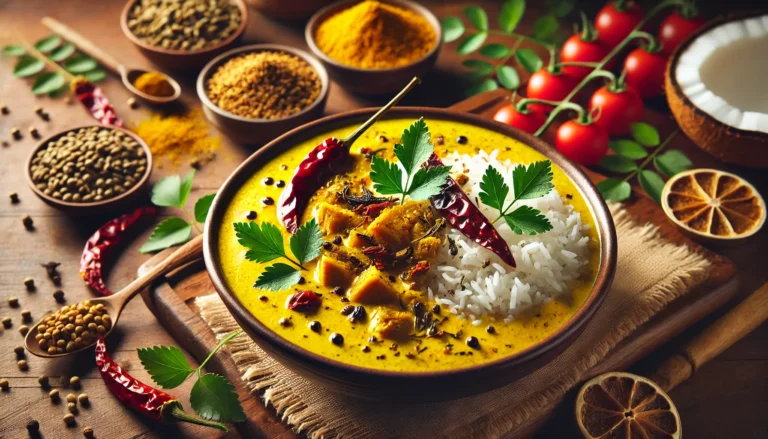10 Natural Foods With More Iron Than Spinach
Iron is a crucial mineral for our bodies, playing a significant role in the production of hemoglobin, which helps transport oxygen throughout the body. Many people turn to spinach to boost their iron intake, but there are several other natural foods that offer even higher iron content. In this blog post, we will explore ten natural foods that provide more iron than spinach, ensuring you have a variety of options to maintain your iron levels and overall health.
1. Lentils
Lentils are a powerhouse when it comes to iron content. A single cup of cooked lentils contains about 6.6 mg of iron, which is almost double the iron content found in a cup of cooked spinach. Besides being rich in iron, lentils are also an excellent source of protein, fiber, and essential vitamins and minerals.
2. Quinoa
Quinoa, often referred to as a superfood, is another fantastic source of iron. One cup of cooked quinoa provides around 2.8 mg of iron. This versatile grain is also packed with protein, making it an excellent choice for vegetarians and vegans looking to increase their iron intake.
3. Pumpkin Seeds
Pumpkin seeds are not only a tasty snack but also a rich source of iron. A quarter cup of pumpkin seeds contains approximately 2.5 mg of iron. These seeds are also high in magnesium, zinc, and healthy fats, contributing to overall wellness.
4. Chickpeas
Chickpeas, or garbanzo beans, are another excellent source of iron. One cup of cooked chickpeas offers about 4.7 mg of iron, significantly more than spinach. They are also rich in protein, fiber, and various vitamins and minerals, making them a nutritious addition to any diet.

5. Dark Chocolate
For those with a sweet tooth, dark chocolate is a delightful way to boost iron intake. A 1-ounce serving of dark chocolate (70-85% cocoa) contains about 3.3 mg of iron. Besides being rich in iron, dark chocolate is loaded with antioxidants and has been linked to various health benefits, including improved heart health.
6. Tofu
Tofu, made from soybeans, is an excellent source of iron for vegetarians and vegans. Half a cup of tofu contains around 3.4 mg of iron. Tofu is also high in protein and provides all nine essential amino acids, making it a complete protein source.
7. Cashews
Cashews are a delicious and iron-rich nut. One ounce of cashews provides about 1.9 mg of iron, making them a great snack to help boost your iron levels. They are also rich in healthy fats, protein, and various vitamins and minerals, including magnesium and vitamin K.
8. Kidney Beans
Kidney beans are another legume that surpasses spinach in iron content. One cup of cooked kidney beans contains around 3.9 mg of iron. They are also an excellent source of protein, fiber, and essential nutrients, making them a staple in many healthy diets.
9. Oysters
Oysters are a powerhouse of iron, particularly for those who consume seafood. A 3-ounce serving of cooked oysters provides an impressive 7.8 mg of iron, which is significantly higher than spinach. Oysters are also rich in zinc, vitamin B12, and other essential nutrients.
10. Beef Liver
For meat-eaters, beef liver is one of the most iron-rich foods available. A 3.5-ounce serving of cooked beef liver contains about 6.5 mg of iron. In addition to iron, beef liver is packed with protein, vitamin A, vitamin B12, and other vital nutrients, making it an exceptionally nutritious choice.
Tips for Maximizing Iron Absorption
While including these iron-rich foods in your diet is essential, it is equally important to maximize iron absorption to ensure your body can efficiently utilize this crucial mineral. Here are a few tips to enhance iron absorption:
1. Pair Iron with Vitamin C
Vitamin C significantly enhances iron absorption. Consuming foods rich in vitamin C, such as citrus fruits, bell peppers, strawberries, and broccoli, alongside iron-rich foods can help boost iron absorption.
2. Avoid Iron Inhibitors
Certain substances can inhibit iron absorption. These include tannins found in tea and coffee, calcium found in dairy products, and phytates found in some grains and legumes. To optimize iron absorption, try to consume these inhibitors separately from iron-rich meals.
3. Cook with Cast Iron
Cooking with cast iron cookware can increase the iron content of your food. Acidic foods, such as tomato sauce, are particularly effective at absorbing iron from cast iron pans.
4. Choose Heme Iron Sources
Heme iron, found in animal products, is more easily absorbed by the body compared to non-heme iron found in plant-based foods. Including heme iron sources, such as lean meats, poultry, and seafood, can help improve overall iron absorption.
Conclusion
Iron is a vital mineral for maintaining good health, and incorporating a variety of iron-rich foods into your diet can help ensure you meet your daily requirements. While spinach is a popular choice, these ten natural foods provide even more iron, offering a diverse range of options to keep your iron levels in check. Whether you prefer plant-based sources like lentils, quinoa, and pumpkin seeds, or animal-based options like oysters and beef liver, there is a wealth of nutritious foods to choose from. By following the tips for maximizing iron absorption, you can make the most of these iron-rich foods and support your overall well-being.
